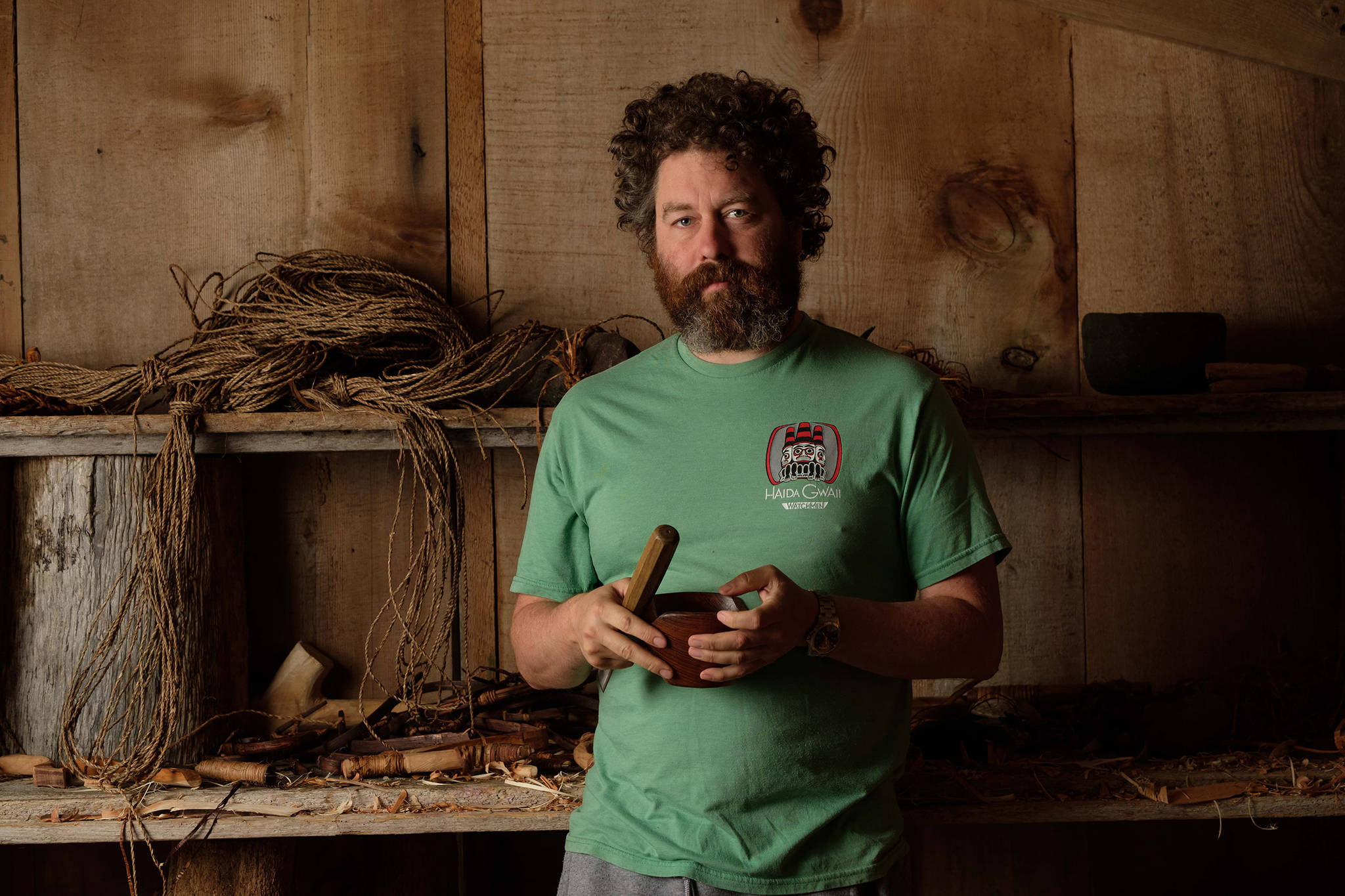Creating the first feature-length Haida-language film was a labor-intensive process.
Gwaii Edenshaw, co-writer and co-director of “SGaawaay K’uuna (Edge of the Knife),” who lives near Haida Gwaii, where the movie was filmed, in Canada, said making the movie required working closely with fluent speakers when writing the script as well as during shooting.
“It was tricky on a number of levels,” Edenshaw said during a phone interview with the Capital City Weekly. “We had to get everything translated and make sure the translations agreed with each other.”
“I think it was more rewarding than challenging,” he added.
Xaad Kíl, sometimes called Haida, is an endangered language spoken by indigenous people along the Pacific Coast, including Southeast Alaska and British Columbia, Canada. Estimates of how many fluent speakers of the language fluctuate, but generally place the figure between a few dozen and 100 fluent speakers.
Thursday, “SG̲aawaay Ḵ’uuna (Edge of the Knife)” had its first Juneau screening at Elizabeth Peratrovich Hall. It was sponsored by the Central Council of the Tlingit and Haida Indian Tribes of Alaska and First Alaskans Institute.
“I think for us it’s historic that there’s a major film done in our indigenous Xaad Kíl language,” said Tlingit and Haida President Chalyee Éesh Richard Peterson. “I’m really excited for it.”
Peterson said proceeds from the screening will go toward supporting Gwaii and co-director Helen Haig-Brown as well as a Haida-language early childhood center in Hydaburg.
The movie was filmed at Haida Gwaii, and the 19th Century period piece tells the story of unexpected tragedy, seclusion and a descent into madness that produces a wild man of traditional legend.
The film is a recent effort and it debuted in September 2018 in Haida Gwaii — where it was filmed — before being shown that month in the Toronto International Film Festival.
“We made this movie for our community,” Edenshaw said.”We know that’s who we were answerable to. Though we did that, it seems that other people like it.”
The movie earned a TIFF Canada’s Top 10 distinction, and while not widely reviewed, the reviews that are online on IMDB and Rotten Tomatoes are generally positive.
The film features three distinct dialects of the Haida language, Edenshaw said. Two of them are northern dialects and one is a southern dialects.
“One reason we did that is to draw on our entire Haida community,” Edenshaw said.
The U.S. and Canadian censuses track Haida people differently, but Peterson said there are about 6,000 Haidas around the world.
To the end of gathering community, Gwaii said the movie was well supported by the Haida Gwaii Museum and received a boost from actors and dance groups who were willing to provide personal belongings to serve as props.
“What we wound up with in terms of set and implements to use on set punched above the weight of our funding,” Edenshaw said.
The lion’s share of funding for the project came from Canadian sources, including Telefilm and the Canadian Media Fund.
Edenshaw is of Haida descent, but he is not a fluent speaker. He said most of the main cast have similar backgrounds.
“The principal cast was pretty much not fluent, but something about the community is everyone speaks some Haida,” Edenshaw said. “On top of learning their roles, they had to learn their lines to properly express themselves.”
Shooting “SG̲aawaay Ḵ’uuna” took about a month, but Edenshaw said there were three or four months of practice and blocking that preceded the shoot.
Fluent speakers such as master Haida weaver Dolores Churchill, Jane Churchill, Benjamin Young, Diane Brown helped ensure actors delivered lines correctly. Fluent speakers and language preservationists helped form the initial script, too.
“When we did this, we called upon all the language experts we were able to,” Edenshaw said. “We’re kind of riding on the coattails of people who spent entire lifetimes on language preservation.”
• Contact arts and culture reporter Ben Hohenstatt at (907)523-2243 or bhohenstatt@juneauempire.com. Follow him on Twitter at @BenHohenstatt.

